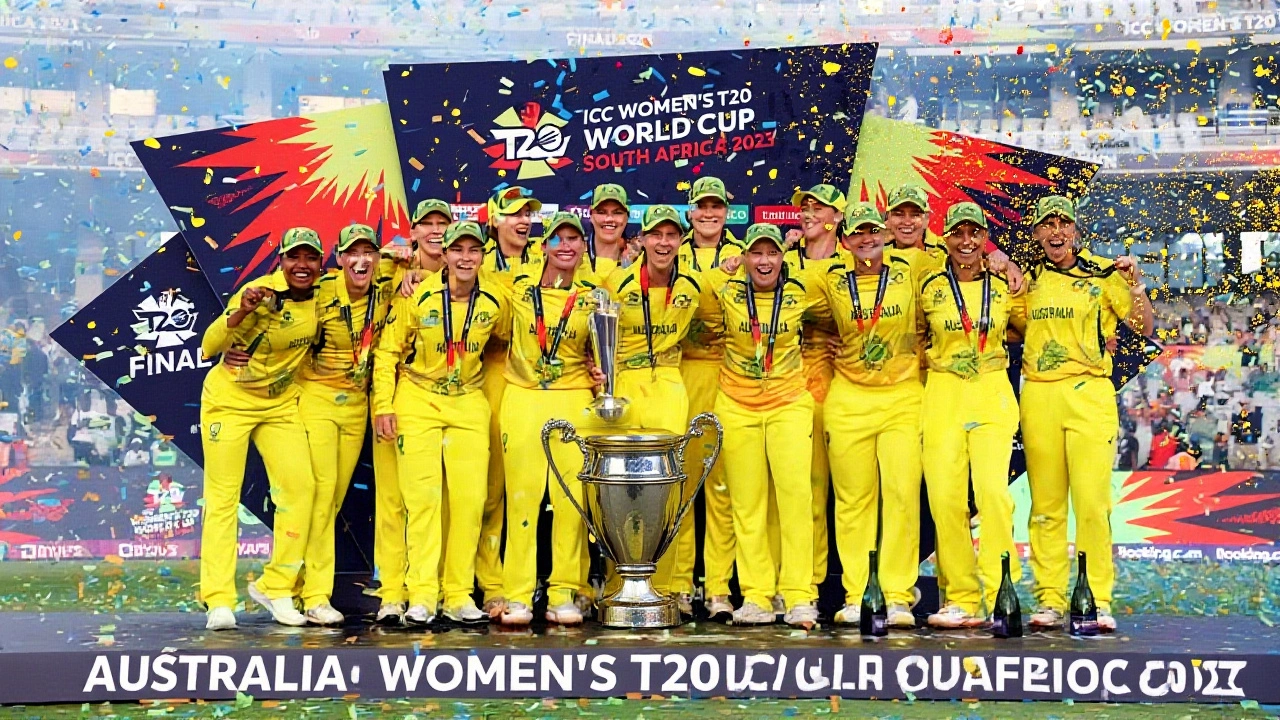The International Cricket Council stunned fans on September 2, 2025 by announcing a four‑fold boost to the prize pool for the upcoming ICC Women's Cricket World Cup 2025India & Sri Lanka. The total cash prize now sits at $13.88 million – a 297 percent jump from the $3.5 million handed out in New Zealand in 2022. That's more than the $10 million pot for the men’s 2023 edition, and the first time a women’s World Cup has eclipsed its male counterpart.
Why the prize‑money jump matters
Here’s the thing: money talks, but it also sends a message. By upping the stakes, the ICC is saying that women's cricket deserves the same financial respect as the men’s game. The move follows a 2023 decision to grant pay parity at ICC‑run tournaments, a promise that finally materialised on the biggest stage – the 50‑over World Cup.
Jay Shah, the ICC Chairman, summed it up nicely: "This four‑fold increase in prize money is a landmark moment for women's cricket and reflects our clear commitment to its long‑term growth. Our message is simple: women cricketers must know they will be treated on par with men if they choose this sport professionally."
His words echo a broader push from sponsors, broadcasters, and fans who have been demanding a level playing field for years.
Host cities and match schedule
The tournament will be staged across five venues, each chosen for its blend of capacity, infrastructure, and cricketing heritage. The opening clash – India versus Sri Lanka – kicks off at Barsapara Cricket Stadium in Guwahati on September 30.
- Indore, Madhya Pradesh – Holkar Cricket Stadium
- Navi Mumbai, Maharashtra – DY Patil Stadium
- Visakhapatnam, Andhra Pradesh – Bay of Bengal Cricket Stadium
- Colombo, Sri Lanka – R. Premadasa Stadium (the sole overseas venue)
Matches will run daily until the final on November 2, giving fans a relentless two‑week cricket feast.
Breakdown of the new prize pool
Numbers speak louder than slogans, so let’s lay them out. The ICC disclosed the following allocations:
- Champions: $4.48 million (up from $1.32 million in 2022)
- Runners‑up: $2.24 million (up from $600 thousand)
- Each losing semi‑finalist: $1.12 million (up from $300 thousand)
- Fifth & sixth place: $700 thousand each
- Seventh & eighth place: $280 thousand each
- Guaranteed participation fee per team: $250 thousand
- Group‑stage win bonus: $34,314 per victory (approx. 24 wins → $823,536 total)
In total, the eight competing nations will walk away with a combined $13.88 million – a figure that places the women’s tournament ahead of the men’s 2023 edition, which awarded $4 million to the champions.
Reactions from players and administrators
Indian captain Harmanpreet Kaur welcomed the news, noting that “it validates the hard work we put in day after day and shows the world that women’s cricket can be a lucrative career.” England's all‑rounder Nat Sciver‑Barnes echoed the sentiment, adding that the financial boost could help younger players stay in the game rather than chase alternative careers.
On the administrative side, Rajesh Sharma, a sports economist at Delhi University, argued that “the increased prize money will likely attract higher‑value broadcast deals and sponsorships, creating a virtuous cycle of investment.” He also warned that the ICC must ensure the money reaches the players promptly, lest the gesture be dismissed as a PR stunt.
Meanwhile, auditors from the ICC’s finance committee confirmed that the additional funding will be sourced from a combination of broadcast rights uplifts, a new “Women’s Cricket Growth Fund,” and contributions from existing commercial partners.
What this means for the future of women's cricket
The twist is that this isn’t just a one‑off cash injection; it signals a strategic shift. The ICC’s board has earmarked $25 million over the next three years for grassroots women’s programs, facility upgrades, and coaching scholarships in emerging nations.
For associate members like the United Arab Emirates and Namibia, the guaranteed participation fee of $250 thousand is a lifeline that could fund domestic leagues and talent pathways. In the long run, a stronger financial base may narrow the gap between full‑member powerhouses and the periphery.
Yet, the journey isn’t over. Critics point out that the prize pool still lags behind the $30 million total for the men’s 2027 World Cup, which is already being planned. The question now is whether the ICC can sustain this upward trajectory or if the numbers will plateau once the novelty fades.
Frequently Asked Questions
How will the increased prize money affect emerging women's cricket teams?
The guaranteed $250 thousand participation fee gives smaller nations a financial cushion to cover travel, training camps, and basic infrastructure. It also means more exposure for players from associate members, which could attract sponsorships and raise the overall standard of competition.
What sparked the ICC’s decision to quadruple the prize pool?
A combination of factors – sustained advocacy from players, growing viewership numbers for women’s cricket, and new commercial deals – convinced the board that a larger prize pool was both feasible and necessary to keep the sport’s growth momentum.
Will the prize money exceed the men’s World Cup again in future editions?
It’s possible but not guaranteed. The men’s tournament is slated to grow to $30 million by 2027, while the women’s prize pool is set at $13.88 million for 2025. Future parity will depend on broadcast revenue, sponsorship interest, and the ICC’s commitment to reinvest earnings back into the women’s game.
How can fans purchase tickets or follow the matches?
Fans can register their interest on the official ICC Women’s Cricket World Cup website, which provides links to venue‑specific ticketing portals. Live streaming will be available through the ICC’s broadcast partners, with highlights and commentary on major sports networks worldwide.
What legacy does the 2025 tournament aim to leave?
Beyond the record prize money, the tournament aims to inspire a new generation of female cricketers, prove the commercial viability of women’s sport, and cement India and Sri Lanka’s reputation as premier hosts for global cricket events.
